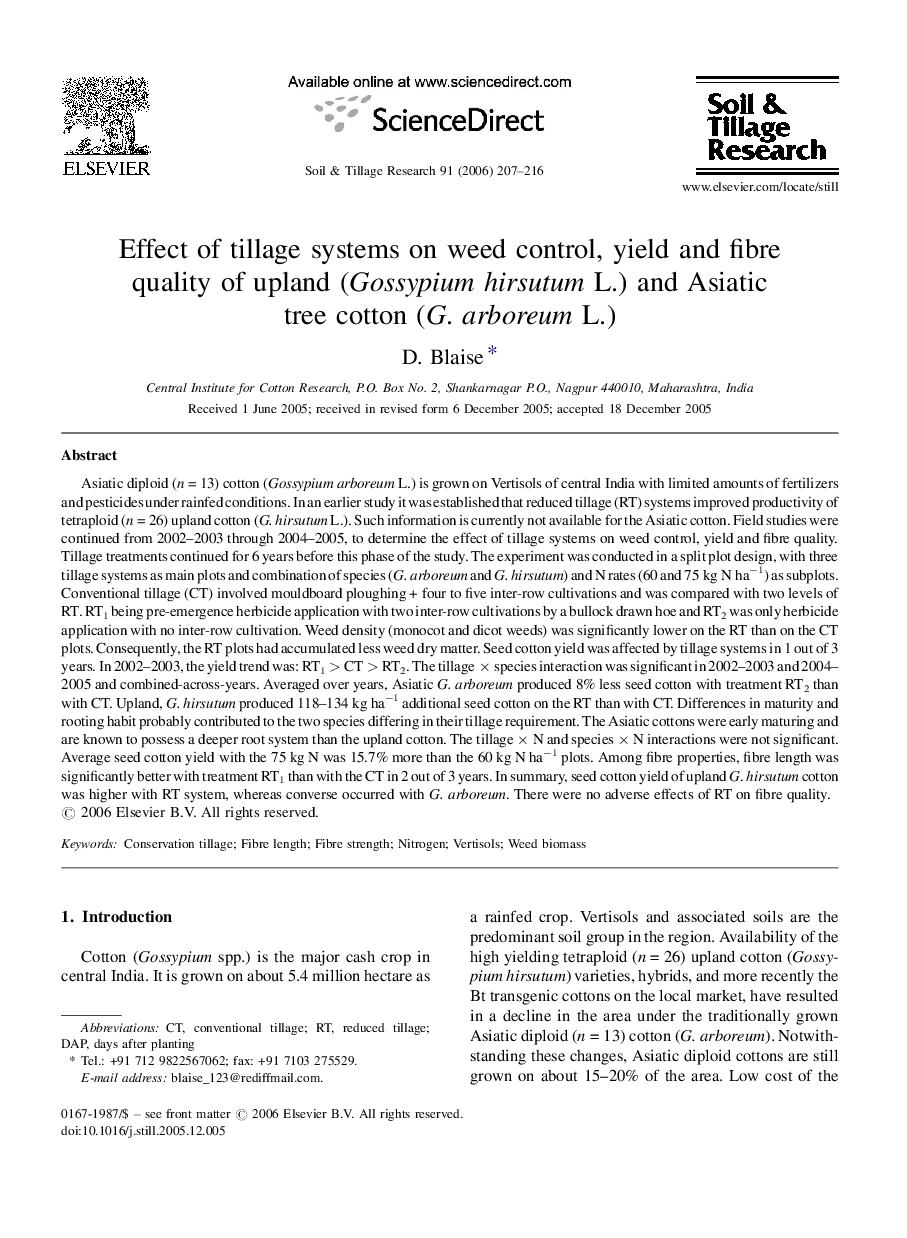| کد مقاله | کد نشریه | سال انتشار | مقاله انگلیسی | نسخه تمام متن |
|---|---|---|---|---|
| 306861 | 513118 | 2006 | 10 صفحه PDF | دانلود رایگان |

Asiatic diploid (n = 13) cotton (Gossypium arboreum L.) is grown on Vertisols of central India with limited amounts of fertilizers and pesticides under rainfed conditions. In an earlier study it was established that reduced tillage (RT) systems improved productivity of tetraploid (n = 26) upland cotton (G. hirsutum L.). Such information is currently not available for the Asiatic cotton. Field studies were continued from 2002–2003 through 2004–2005, to determine the effect of tillage systems on weed control, yield and fibre quality. Tillage treatments continued for 6 years before this phase of the study. The experiment was conducted in a split plot design, with three tillage systems as main plots and combination of species (G. arboreum and G. hirsutum) and N rates (60 and 75 kg N ha−1) as subplots. Conventional tillage (CT) involved mouldboard ploughing + four to five inter-row cultivations and was compared with two levels of RT. RT1 being pre-emergence herbicide application with two inter-row cultivations by a bullock drawn hoe and RT2 was only herbicide application with no inter-row cultivation. Weed density (monocot and dicot weeds) was significantly lower on the RT than on the CT plots. Consequently, the RT plots had accumulated less weed dry matter. Seed cotton yield was affected by tillage systems in 1 out of 3 years. In 2002–2003, the yield trend was: RT1 > CT > RT2. The tillage × species interaction was significant in 2002–2003 and 2004–2005 and combined-across-years. Averaged over years, Asiatic G. arboreum produced 8% less seed cotton with treatment RT2 than with CT. Upland, G. hirsutum produced 118–134 kg ha−1 additional seed cotton on the RT than with CT. Differences in maturity and rooting habit probably contributed to the two species differing in their tillage requirement. The Asiatic cottons were early maturing and are known to possess a deeper root system than the upland cotton. The tillage × N and species × N interactions were not significant. Average seed cotton yield with the 75 kg N was 15.7% more than the 60 kg N ha−1 plots. Among fibre properties, fibre length was significantly better with treatment RT1 than with the CT in 2 out of 3 years. In summary, seed cotton yield of upland G. hirsutum cotton was higher with RT system, whereas converse occurred with G. arboreum. There were no adverse effects of RT on fibre quality.
Journal: Soil and Tillage Research - Volume 91, Issues 1–2, December 2006, Pages 207–216